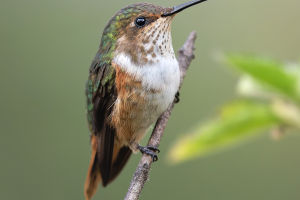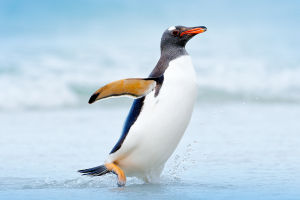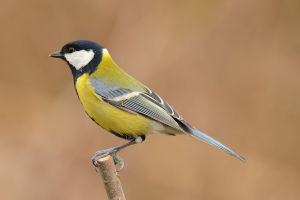Penguins are a unique bird species that live in Antarctica and its surrounding areas. They are adored by people for their cute appearance and extraordinary survival abilities.
Although penguins are birds, they have lost the ability to fly. Instead, they have evolved specialized skills that are highly suited to life in the water.
Penguins’ body structure and behavior are perfectly adapted to their extreme environment, making them one of the most iconic creatures of the Antarctic.
Penguins are easily recognizable by their appearance. Their bodies are streamlined, effectively reducing resistance when swimming. Their wings have evolved into structures similar to fish fins. Although they cannot fly, their wings serve as powerful propulsion tools underwater.
Penguins’ feathers are dense and smooth, which helps keep them warm and withstand the severe cold of Antarctica. Their black and white coloration is not only charming but also provides a type of camouflage when hunting and avoiding predators.
In the water, their black backs blend into the dark ocean depths, while their white bellies match the brighter water surface, making them harder to spot.
There are many species of penguins, but the most well-known is the emperor penguin. The emperor penguin is the largest of all penguin species, with adults reaching heights of around 1.2 meters and weights of up to 40 kilograms.
They are not only remarkable for their size but are also famous for their extreme endurance and perseverance during the breeding season. In the harsh Antarctic winter, emperor penguins gather in large groups to endure the cold.
Male penguins take on the responsibility of incubating the eggs, while the females go to the sea to hunt for food. During this incubation period, the males place the eggs on their feet and cover them with the skin from their abdomens to keep them warm.
This process can last for several weeks, during which time the male penguins eat almost nothing, relying entirely on stored fat for survival.
Penguins primarily feed on fish, squid, and krill, making them excellent hunters. When hunting, penguins dive into the water and use their strong bodies and excellent swimming skills to swiftly chase down their prey.
Their vision is well-adapted for underwater environments, helping them spot food in the cold, dark waters of Antarctica. While penguins may appear slow and clumsy on land, especially when they walk, they are incredibly agile in water and capable of swimming at speeds over 10 kilometers per hour.
Additionally, penguins possess impressive diving abilities. Some species can dive as deep as 500 meters and remain submerged for up to 20 minutes.
Penguins' social structure is also fascinating. They typically live in colonies and have complex methods of communication. Penguins communicate through vocalizations and body language, especially during the breeding season.
They produce distinct calls to recognize their partners and offspring. Living in groups helps penguins not only withstand the cold but also reduce the threat of predators. Penguins' main predators include seals and some large seabirds. In the water, penguins must remain constantly alert to avoid becoming prey.
Penguins have a special appeal to humans, perhaps due to their cute appearance, awkward movements, and gentle nature, or perhaps because of their resilience and bravery in surviving in such harsh environments.
Penguins have appeared in numerous documentaries, animations, and movies, which have made them a symbol of Antarctica and raised public awareness about their living conditions.
Penguins are not only an integral part of the Antarctic ecosystem but also one of the most captivating animals on the planet. Their way of life reflects the environmental changes occurring in Antarctica, reminding us of the profound impact that climate change is having on ecosystems worldwide.
Protecting penguins and their habitats is not just about conserving a single species, but about preserving our planet as a whole. As environmental awareness grows, we can hope that penguins will continue to thrive in their Antarctic home and live freely in the wild.


